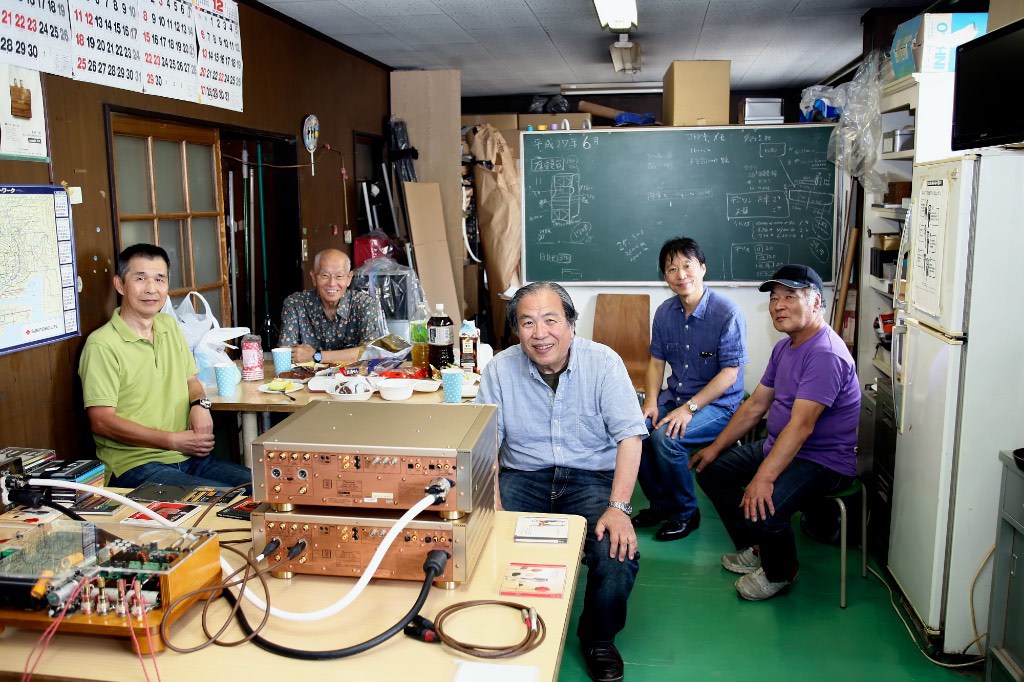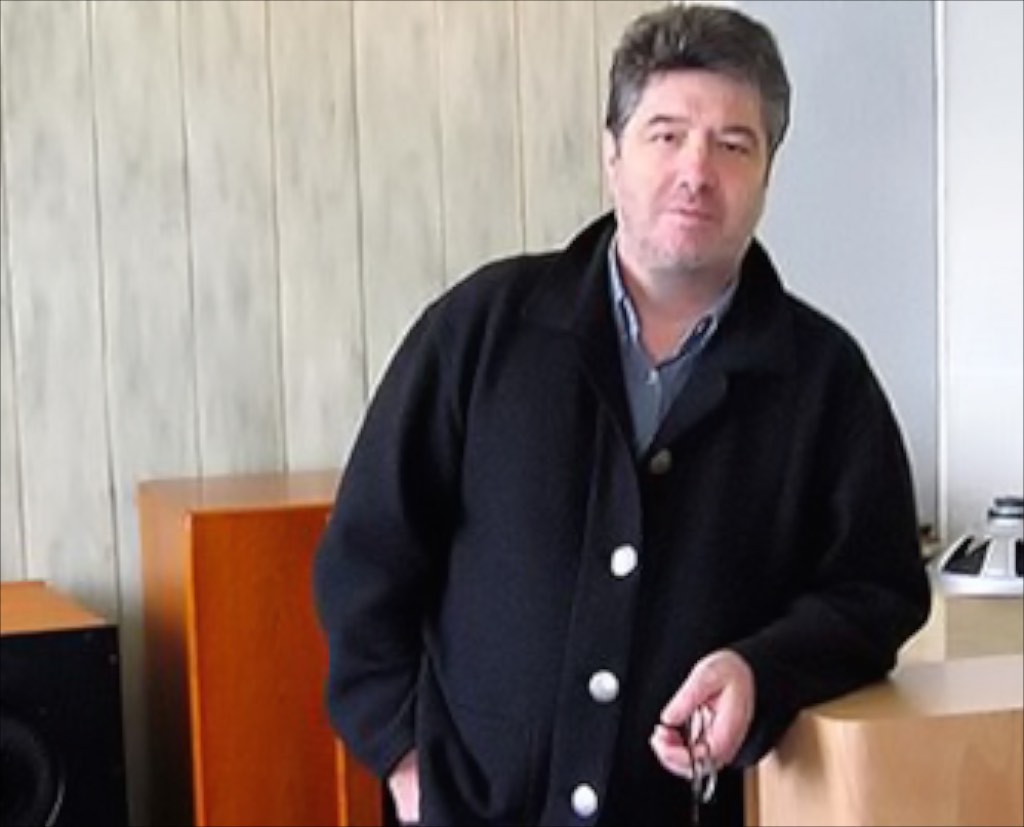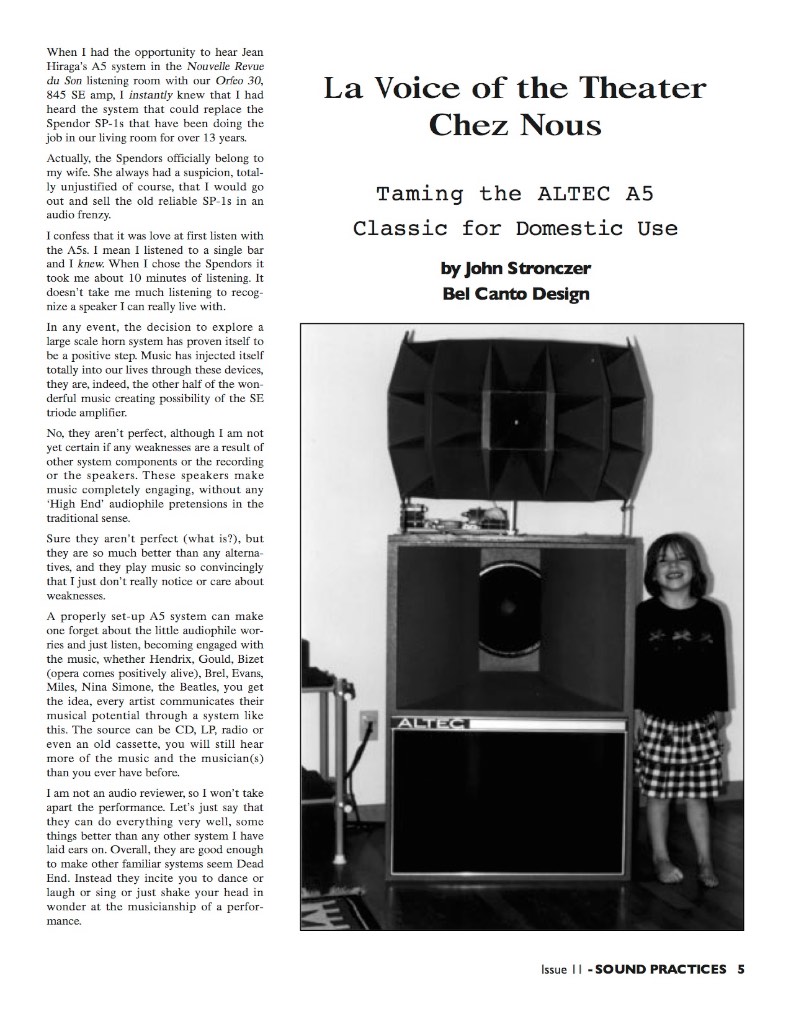In 1877 Thomas Edison invented recording with the phonograph, and kicked off the acoustic era of recording that lasted until 1925, when Western Electric initiated the electrical era of recording with the development of microphones, amplifiers, disc cutting machines, loudspeakers, and sound for movies.
Western Electric supported the theater movie sound business until 1936, when the movie theater industry declined dramatically during the depression, and then Western Electric decided to abandon the rapidly declining movie theater sound part of their business.
In response, a group of Western Electric engineers (George Carrington, Mike Conrow, and Alvis Ward) founded Altec in 1937 (Altec stands for "all technical") to pick up where Western Electric had left off in supporting the movie theater sound business.
Altec managed to survive the difficult economics of those next few years, and then in 1941 acquired the Lansing Manufacturing Co. loudspeaker company from Jim Lansing, so they could expand their business opportunities by manufacturing equipment to supply to movie theaters, and Altec Lansing was born.
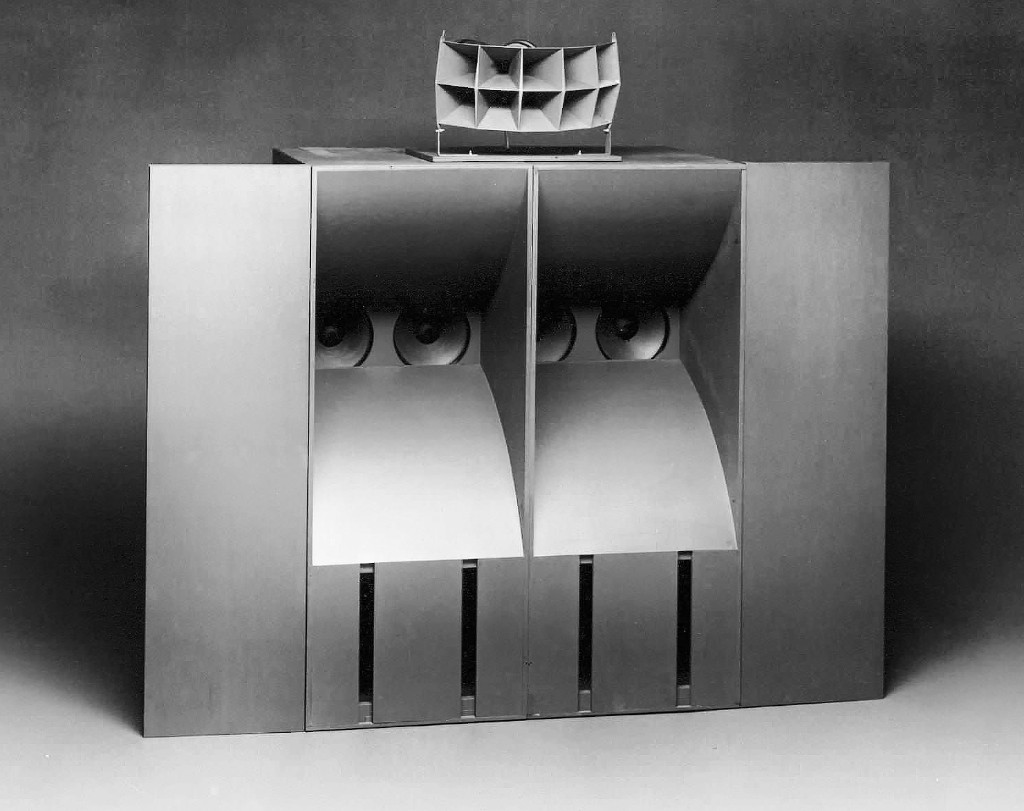
The Altec Lansing A2 'Voice of the Theatre' loudspeaker combines two 210 low-frequency cabinets with four 515E drivers, and one 1005B horn with two 288-16K high-frequency compression drivers - a theater classic!
In 1945 the first Altec Lansing ‘Voice of the Theatre’ loudspeakers, like the A1, A4, and the A5, began to appear behind the screens in movie theaters, and by 1955 the Academy of Motion Picture Arts and Sciences adopted the ‘Voice of the Theatre’ loudspeakers as the industry standard.
Ever since I’ve been writing about audio I’ve been interested in the contribution that Altec Lansing ‘Voice of the Theatre’ loudspeakers have made to film, music, and audio.
In my article ‘Adventures in Real Sound with Mr. Shirokazu Yazaki’ (Positive Feedback Issue 81) I wrote about some of the stories that Yazaki-san shared with me about his earliest experiences in audio that involved ‘Voice of the Theatre’ loudspeakers.
Yazaki-san told me about how in the late 1960s as a university student, he was first introduced to the Altec Lansing ‘Voice of the Theatre’ loudspeakers, when on “One Sunday afternoon, I went to a jazz café to fill up the time. The café was below ground, and so I went down the stairs to a thick glass door. When I reached to the door, I could clearly hear the sound through it of someone playing jazz piano. In the next breath, I went into the café, but I couldn't see anyone playing the piano. I only found & heard two big speakers that were playing lively real piano in the poor lighting. Well, as things turned out, the piece for piano was Chick Corea's "Piano Improvisation Vol. 1" and the speakers were the Altec Magnificent, displayed just like beautiful furnishings (and reminding me of the famous home-use Altec A-7), and they were played by either by Marantz or McIntosh tube amplifiers, I think. I was so shocked at the sound, it could reproduce the strong touch of metal string, the sharp rise of tone timbre, and furthermore the furious penetrating sound field. I found out that sound would be a characteristic of a horn-type speaker. After that, in my audio enthusiasm I desired to have an excellent horn speaker system …”
I also fondly remember interviewing Keith Aschenbrenner of Auditorium 23 for a SixMoons.com article I wrote back in 2005, where Keith told me stories about events that influenced him in his audio interests. One of those experiences occurred in the early 1980s while Keith was traveling to Brittany in the west of France during the holidays, and he came across the French enthusiast audio magazine L´Audiophile.
L´Audiophile had opened a shop in Paris to demonstrate their do-it-yourself (DIY) audio projects and to sell parts to the DIY hi-fi hobbyists of France. Keith told me that listening to music at L´Audiophile over their system was a shock to him. Keith told me that when he listened to L´Audiophile’s demonstration system using ‘Voice of the Theatre’ loudspeakers, he immediately realized that his hi-fi system at home was a far cry from the musical realism and dynamic truths that the L´Audiophile system with those ‘Voice of the Theatre’ loudspeakers achieved so easily.
When Keith got back home he and his friend Norbert Gütte experimented with ‘Voice of the Theatre’ loudspeakers and single ended amplifiers (SETs), with the goal of musical realism, which was sparked by the listening sessions at L´Audiophile.
Keith told me about how the combination of his first 300B SET amplifier with his ‘Voice of Theatre’ loudspeakers was “… just like a musical Christmas present. In the beginning, we handled it like Sunday shoes. The harmonic integrity and musical realism were astonishing. We went from using it for special demonstrations only to using it every day.”
John Stronczer (Bel Canto Design), described a similar experience to Keith's for Sound Practices readers in Issue 11, telling them about when he first heard Jean Hiraga’s Altec-Lansing A5 ‘Voice of the Theatre’ loudspeakers at the Nouvelle Revue du Son listening room in Paris. John said, “I confess that it was love at first listen with the A5s. I mean I listened to a single bar and I knew.” John went on to adapt an Altec Lansing A5 ‘Voice of the Theatre’ loudspeaker system for home use for his own music listening pleasure.
It’s not just the Academy of Motion Picture Arts and Sciences, and discerning Japanese, French, German, and American, audio enthusiasts who have appreciated the magic of Altec Lansing ‘Voice of the Theatre’ loudspeakers, but also musicians like the Grateful Dead.
In the book Grateful Dead Gear by Blair Jackson, ‘Bear’ (Owsley Stanley), the Grateful Dead’s sound man for many years, described how he introduced the Grateful Dead to the ‘Voice of the Theatre’ loudspeakers and McIntosh MC240 amplifier he used in his home stereo in Berkeley. The impressive sound quality that Bear’s ‘Voice of the Theatre’ & McIntosh MC240 hi-fi system was capable of inspired The Dead to develop a practice system based on ‘Voice of the Theatre’ loudspeakers and McIntosh amplification, which also served as their early PA system.
When I was reading Phil Lesh's book, ‘Searching for Sound’, about his life as the Grateful Dead's bass player, I was fascinated to read his description of their Los Angeles 'pink house' practice system in 1966: "The equipment was set up in the living room: the "lead sled" of Mac amps (four McIntosh 240 stereo tube amps running mono, one for each electric instrument—two guitars, bass, and keyboard—bolted onto a single sheet of two-inch plywood), the Altec "Voice of the Theater" speakers (huge woofer and horn combo speakers, four in all, one for each amp), and all the drums and instruments. The volume level of this gear was enough to bulge out the sides of the house when we cranked."
That ‘Voice of the Theatre’ and McIntosh system would directly inspire Bear and the Grateful Dead to develop the famous ‘Wall of Sound’ PA system to use in their live performances, which was the largest sound system ever built at that time.
“Voice of the Theatre” loudspeakers had become popular in movie theaters, in concert halls, with rock bands, and custom-made VOTTs were even used at the famous 1969 Woodstock music festival, but then passed into obscurity, except for their use by a few discerning audio enthusiasts in Japan, France, Germany, and America.
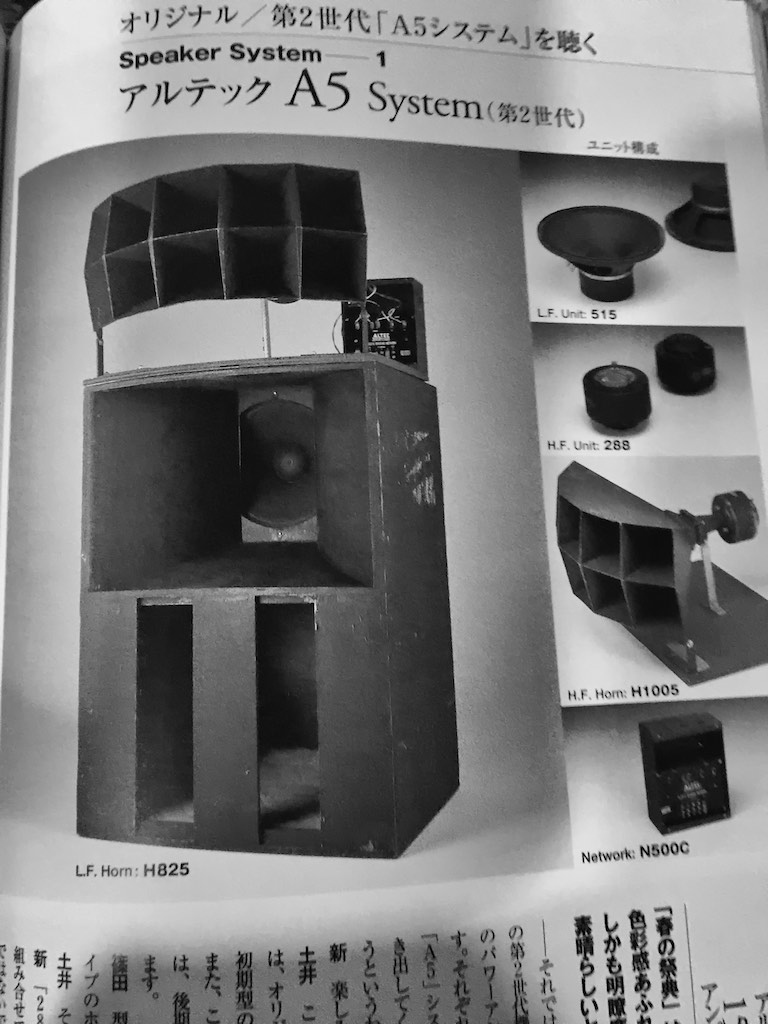
Yazaki-san gave me a copy of a great magazine - The Tube Kingdom, 2007 Winter issue - that had really nice coverage of Altec A5 VOTTs, that I have been slowly translating into English from Japanese. Thank you Yazaki-san!
I decided that I wanted to hear the ‘Voice of the Theatre’ sound that those who came before me had heard, to experience for myself what had been such an inspiration for others.
I considered two potential choices, the A5 and A7-500 'Voice of the Theatre' models, as they seemed the most likely to be successfully tamed for a smaller home listening environment, as the Altec Lansing product literature of the day said, the A5 (and A7-500) were designed "to meet the needs of today's smaller, multiple theatres. They use a carefully designed low frequency cabinet and single bass driver. The A5 is available with a choice of high frequency horns to cover a variety of seating arrangements."
Given the noted success of Jean Hiraga's demonstrations with his A5 VOTTs, and the availability of information about the Hiraga-san's crossover design, the A5 seemed the best candidate for adapting it to home listening use. So yesterday I commissioned the restoration of a pair of vintage Altec Lansing A5 ‘Voice of the Theatre’ loudspeakers.
In the photo above you can see an Altec A5 VOTT with the 1005B horn, which is the style of horn I am getting. I'll be getting the Altec 515E ceramic-magnet low-frequency driver rather than the more traditional Alnico 515B, recommended to me as it has 5 Hz more bass extension, and a reputation for a clearer & more articulate presentation, due to the use of a slightly lighter cone paper that responds easier and more smoothly than the heavier cone paper used in the Alnico 515B low-frequency driver. I'll be using the Altec 288C high-frequency compression driver a-la Jean Hiraga. I chose to go with the 16 Ohm versions of the drivers due to their reputation for being easier to drive and smoother sounding than the 8 Ohm versions. The bass-horn cabinet will be the 825B, with port dimensions similar to those suggested in John Stronczer's article, and a grill assembly that looks like the one in photo below. The restoration will also include the Altec 500C crossover.
You can see this exact configuration in the Altec Lansing product literature archived at the Great Plains Audio web site here (excerpt below):
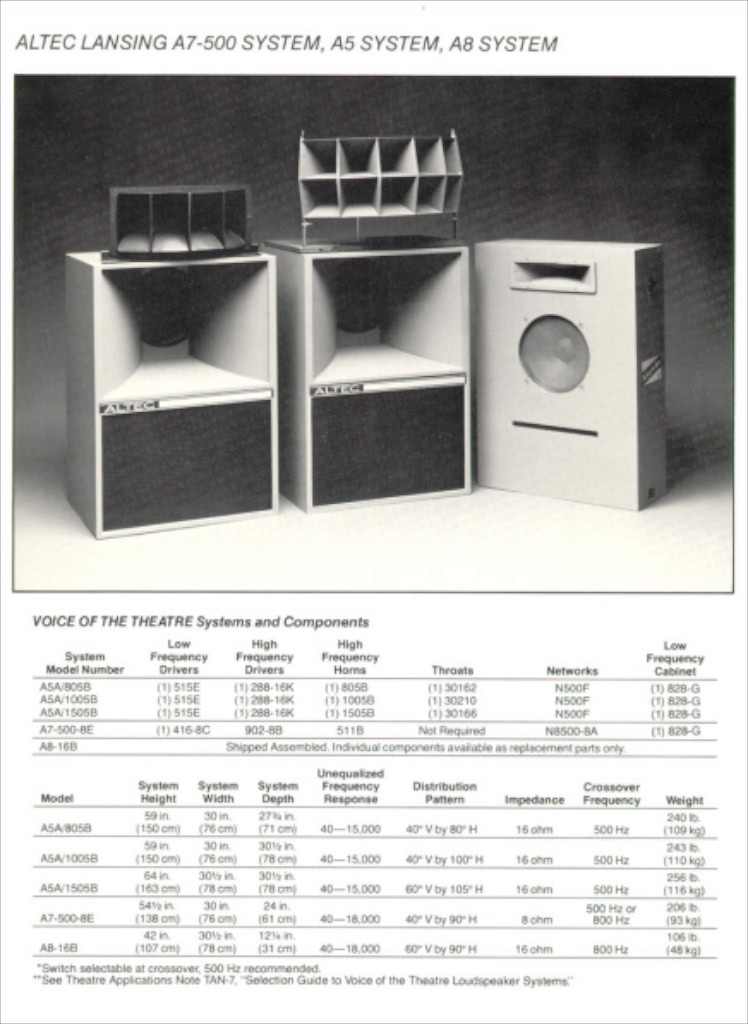
When they arrive I will describe the restoration they have received, and their performance as they came from the 'factory'.
Then, with a little help from my friends, I’ll build some Jean Hiraga inspired outboard crossovers to better adapt them to home use, and I’ll rewire them internally with vintage Western Electric WE16GA.
I’ll describe the results to you every step of the way here at Jeff’s Place, eventually culminating in a feature article for Positive Feedback.
John Stronczer (Bel Canto Design) has offered to share with me his insights on implementing and refining the Hiraga-inspired crossover design, and Yazaki-san has offered to make recommendations for crossover components to achieve ‘Real Sound’ results. Daryl & Gary at Arizona Capacitors have offered to provide and/or develop capacitors for the project to optimize the crossovers' performance.
There’s also other very exciting aspects to this ‘Voice of the Theatre’ project that I need to keep secret for now, but about which I’ll tell you all about in due time.
By the way, this is intended to be a ‘real world’ everyman’s sort of project, so you will be able to reproduce it on a fairly modest budget should you desire to. An expertly restored pair of Altec Lansing A5 ‘Voice of the Theatre’ loudspeakers can be bought for around $5000 USD, and for an even more cost effective project, an expertly restored pair of Altec Lansing A7-500 ‘Voice of the Theatre’ loudspeakers can be bought for around $3000 USD.
I’ll have much more to say in the near future about all of this, and I’m quite excited about it all!
Stay tuned, and please join me as I explore our audio roots - thanks for stopping by!






